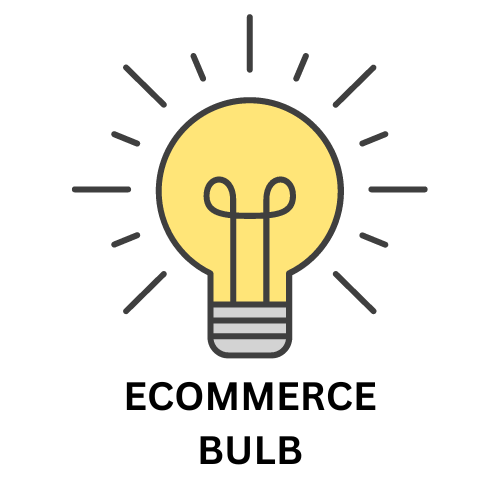Here in this blog post we are going to discover how to make personalization with Optimizely
Personalization is no longer a luxury in the world of e-commerce; it’s a necessity. It’s about creating a shopping experience that feels tailored to each individual customer. Here’s why it’s crucial:
Enhanced Customer Experience
- Relevance: Customers are more likely to engage with products and content that aligns with their interests and preferences.
- Efficiency: Personalized recommendations help customers find what they want faster, reducing frustration.
- Satisfaction: A tailored experience shows customers that you value their time and understand their needs.
Increased Sales and Revenue
- Higher conversion rates: Personalized product recommendations and targeted offers can significantly boost sales.
- Larger average order value: Upselling and cross-selling become more effective with personalized suggestions.
- Repeat business: Customers are more likely to return if they feel valued and understood.
Stronger Customer Loyalty
- Personalized interactions: Building relationships through tailored experiences fosters customer loyalty.
- Increased brand affinity: Customers who feel understood are more likely to become brand advocates.
- Reduced churn: A personalized experience can help retain customers and prevent them from shopping elsewhere.
Data-Driven Insights
- Customer behavior understanding: Personalization relies on data, providing valuable insights into customer preferences.
- Optimized marketing campaigns: Personalization helps identify high-performing campaigns and target specific customer segments.
- Product development: Customer data can inform product development and improvement.

Personalization with Optimizely:

Optimizely offers a robust platform for creating personalized experiences for your website visitors. Here’s a general overview of the process:
1. Define Your Goals:
- Clearly outline what you want to achieve with personalization.
- Identify key metrics to measure success (e.g., conversion rate, average order value, time on site).
2. Collect and Analyze Data:
- Gather customer data such as demographics, behavior, and purchase history.
- Use this data to identify customer segments and their preferences.
3. Create Audience Segments:
- Define specific groups of customers based on shared characteristics.
- Use Optimizely’s audience builder to create these segments.
4. Design Personalized Experiences:
- Create different variations of website elements (e.g., headlines, images, product recommendations).
- Ensure these variations align with the preferences of your target audience.
5. Set Up A/B Tests:
- Use Optimizely’s experimentation features to test different personalized experiences.
- Compare the performance of each variation to determine the most effective approach.
6. Implement Personalization:
- Integrate Optimizely’s code into your website.
- Use the platform to deliver personalized content based on audience segmentation.
7. Monitor and Optimize:
- Continuously track the performance of your personalization efforts.
- Refine your strategies based on data insights.
Specific Optimizely Features:
- Audience Builder: Create detailed customer segments based on various criteria.
- Visual Editor: Easily create and edit personalized experiences without coding.
- A/B Testing: Conduct experiments to determine the best-performing variations.
- Personalization Rules: Define specific conditions for delivering personalized content.
- Machine Learning: Leverage AI-powered recommendations for advanced personalization.

Optimizely Web Personalization:

Optimizely Web Personalization is a powerful tool that enables businesses to deliver tailored experiences to individual website visitors. Here’s a simplified breakdown of how it works:
1. Data Collection
- User behavior: Optimizely tracks user actions on your website, such as clicks, page views, and purchases.
- Customer data: You can integrate data from your CRM or other systems to enrich user profiles.
2. Audience Segmentation
- Define segments: Based on collected data, you can create audience segments. Examples include:
- Demographic information (age, gender, location)
- Behavior (past purchases, product categories viewed)
- Technical attributes (device type, browser)
- Targeting criteria: Use a combination of these attributes to define specific audience segments.
3. Experience Creation
- Visual editor: Optimizely offers a drag-and-drop interface to create personalized experiences without coding.
- Variations: Create different versions of a page or element to test.
- Content personalization: Customize text, images, and product recommendations based on audience segments.
4. A/B Testing and Optimization
- Experimentation: Run A/B tests to compare the performance of different personalized experiences.
- Data analysis: Analyze results to identify the most effective variations.
- Iterative improvement: Continuously refine your personalization strategies based on data insights.
5. Real-time Delivery
- Dynamic content: Optimizely delivers personalized content in real-time based on user attributes and behavior.
- Seamless experience: Users see a tailored website experience without noticeable delays.
Key Features of Optimizely Web Personalization:
- Audience Builder: Create and manage audience segments.
- Visual Editor: Design and edit personalized experiences without coding.
- A/B Testing: Test different variations and measure performance.
- Machine Learning: Leverage AI-powered recommendations for advanced personalization.
- Integrations: Connect with other marketing and analytics tools.
In essence, Optimizely Web Personalization allows you to create targeted experiences that resonate with individual visitors, leading to increased engagement, conversions, and customer satisfaction.

Optimizely Personalization Campaigns:

Creating a personalization campaign in Optimizely involves several key steps:
1. Define Your Goals and Audience Segments
- Identify your objectives: Clearly define what you want to achieve with your campaign (e.g., increase conversions, improve engagement, boost revenue).
- Create audience segments: Define specific groups of visitors based on shared characteristics (demographics, behavior, etc.). Optimizely’s audience builder is a powerful tool for this.
2. Select Pages and Experiences
- Choose target pages: Determine where you want to implement personalization (e.g., homepage, product page, checkout).
- Create experiences: Design different versions of these pages for different audience segments. Use Optimizely’s visual editor to make changes without coding.
3. Set Up A/B Testing
- Create variations: Create multiple versions of your personalized experiences to test.
- Allocate traffic: Determine how much traffic you want to allocate to each variation.
- Define metrics: Choose the key metrics you’ll use to measure success (e.g., conversion rate, average order value).
4. Launch and Monitor
- Deploy the campaign: Implement the Optimizely code snippet on your website to activate the personalization campaign.
- Monitor performance: Track the performance of your campaign using Optimizely’s analytics tools.
- Iterate and optimize: Continuously analyze results and make adjustments to improve campaign performance.
Additional Tips:
- Start small: Begin with a simple personalization campaign to get familiar with the platform.
- Leverage machine learning: Utilize Optimizely’s machine learning capabilities for advanced personalization.
- Integrate data: Combine data from other sources to enhance audience segmentation.
- Test and learn: Continuously experiment with different variations to optimize results.
Example Personalization Campaign:
- Goal: Increase product purchases on the product page.
- Audience segments: Returning customers, new customers, high-value customers.
- Experiences:
- For returning customers: Highlight product reviews and customer testimonials.
- For new customers: Offer a welcome discount or free shipping.
- For high-value customers: Showcase premium product features and exclusive offers.

Optimizely content delivery API personalization:

Optimizely Content Delivery API Personalization allows you to deliver tailored content to specific user segments based on their attributes and behavior. This is achieved by integrating the API into your application and using it to fetch personalized content based on user data.
How it works:
- Data Collection: Gather user data (demographics, behavior, preferences) and store it in a suitable system.
- API Integration: Integrate the Optimizely Content Delivery API into your application.
- Content Creation: Create different content variations within the Optimizely platform.
- API Calls: Pass user data to the API to retrieve the most relevant content variation.
- Content Delivery: Display the fetched content on your website or application.
Key Features:
- Dynamic content delivery: Deliver personalized content in real-time based on user attributes.
- A/B testing integration: Test different content variations to optimize performance.
- Flexible integration: Integrate with various platforms and frameworks.
- Scalability: Handle large volumes of traffic and content.
Example Use Cases:
- Personalized product recommendations: Suggest products based on user purchase history or browsing behavior.
- Targeted content: Deliver content tailored to specific user segments (e.g., location, demographics).
- Dynamic pricing: Offer personalized pricing based on user behavior or attributes.
- Personalized email campaigns: Send targeted email content based on user preferences.
Benefits:
- Enhanced user experience: Deliver content that resonates with individual users.
- Increased engagement: Boost user interaction and time spent on your site.
- Higher conversion rates: Improve sales and conversions through targeted content.
- Data-driven decisions: Use analytics to optimize personalization strategies.
By leveraging the Optimizely Content Delivery API, you can create highly personalized experiences that drive customer satisfaction and business growth.

Optimizely Personalization Examples:

Optimizely offers a vast array of personalization possibilities. Here are some concrete examples:
E-commerce
- Product Recommendations:
- Showing products similar to items a customer has viewed or purchased.
- Offering complementary products based on cart contents.
- Displaying personalized product bundles.
- Personalized Pricing:
- Dynamic pricing based on customer segments or behavior.
- Offering discounts to specific customer groups.
- Checkout Optimization:
- Tailoring the checkout process based on customer preferences or purchase history.
- Offering expedited shipping options for high-value customers.
Content-Based Websites
- News and Media:
- Recommending articles based on reader interests or past behavior.
- Displaying personalized content based on location or device.
- Education:
- Tailoring course recommendations based on student progress or learning style.
- Providing personalized learning paths.
- Travel:
- Offering customized travel packages based on user preferences and budget.
- Displaying relevant travel destinations based on user location.
Marketing and Lead Generation
- Landing Page Personalization:
- Creating different landing page variations for different audience segments.
- Tailoring content based on lead source or referral traffic.
- Email Marketing:
- Sending personalized email campaigns based on customer behavior or preferences.
- Dynamically adjusting email content based on recipient data.
- Form Optimization:
- Personalizing form fields based on user information.
- Offering different form options for different customer segments.
Other Examples
- Mobile App Personalization:
- Delivering personalized in-app messages and notifications.
- Suggesting features based on user behavior.
- Website Layout:
- Adapting website layout to different device types and screen sizes.
- Optimizing layout based on user preferences or behavior.
Remember: The key to successful personalization is to collect and leverage customer data effectively. Optimizely provides the tools to create and test different personalization strategies, helping you optimize your website or app for maximum impact.



Leave a Reply